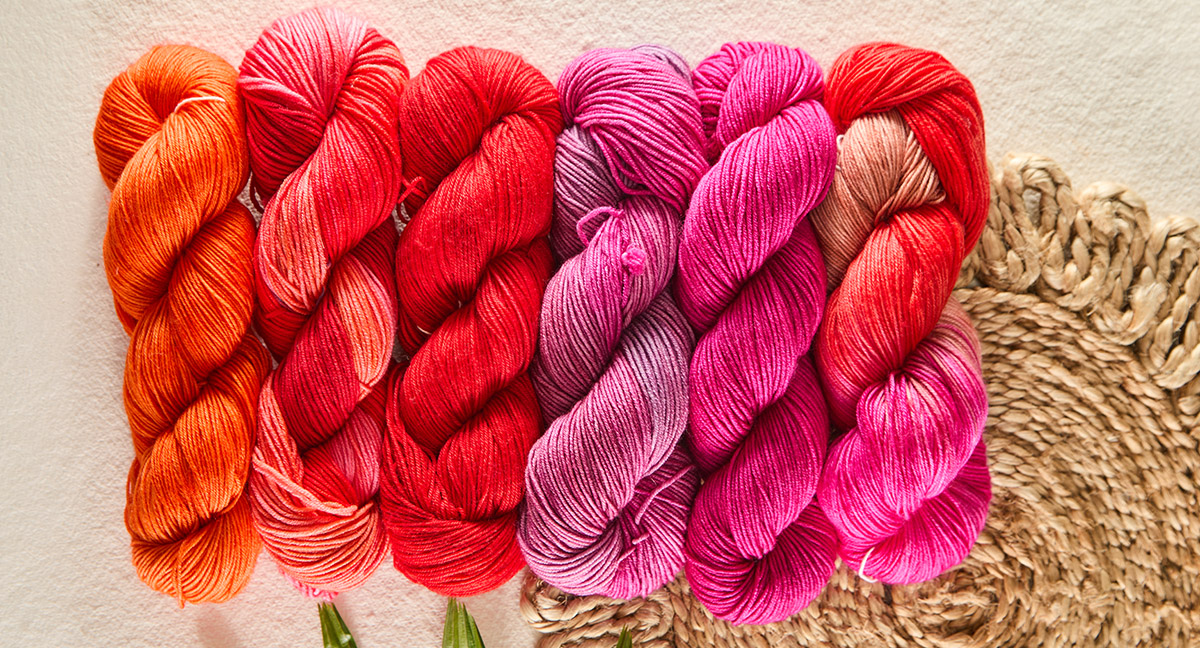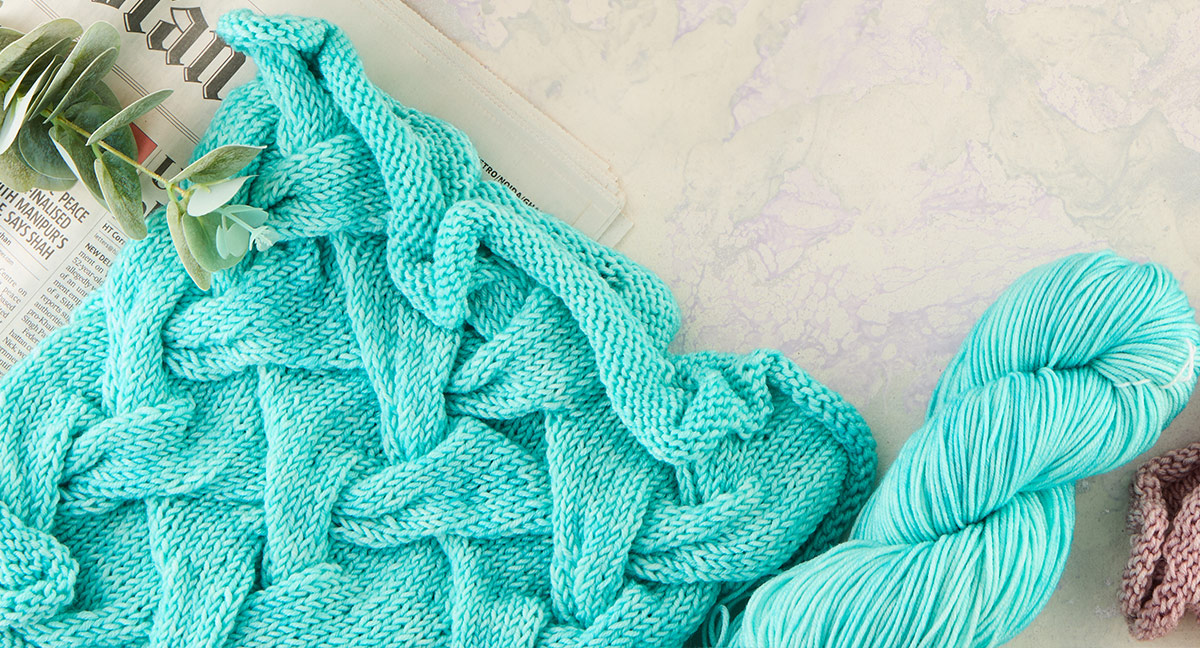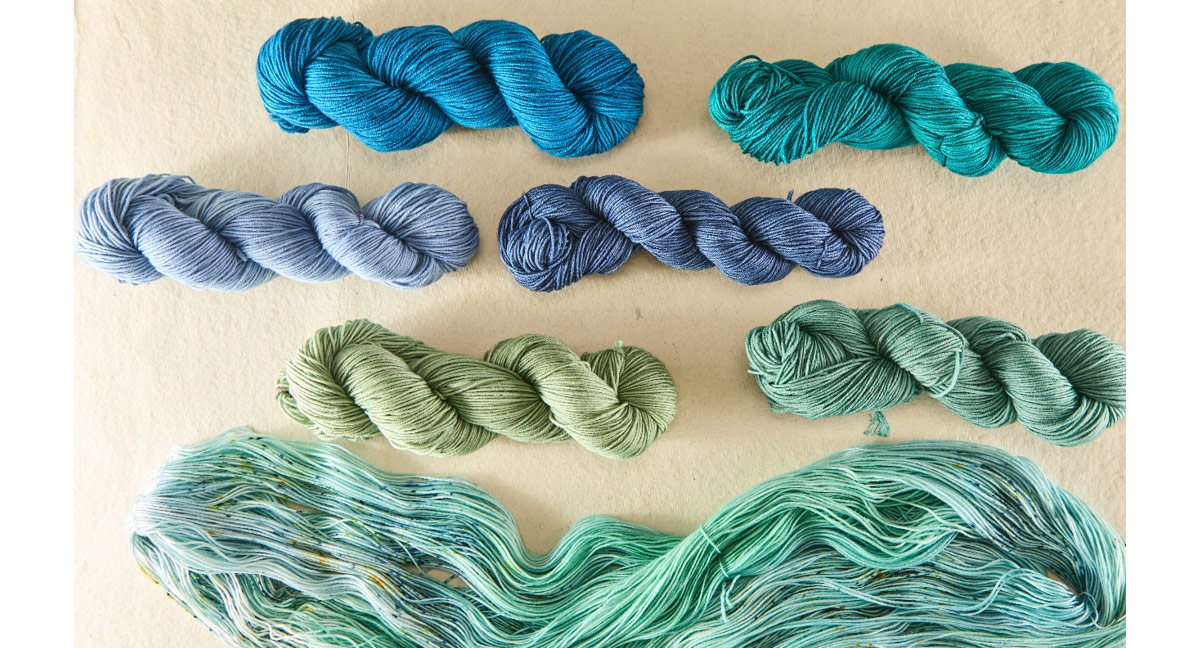Guide to Choose the Best Yarn Weights for Different Knitting Techniques
- Blog Views : 1234
- Symfonie Yarns
- 16Jul, 2025

A yarn skein opens endless possibilities. Whether it is fine lace, sock yarn, versatile DK weight, cozy worsted-weight, or bulkier options, every yarn can create magic. However, the right yarn weight for the knitting technique is the right way to bring out the beauty of the yarn and stitch pattern. If you are working with colorful yarns, then it is all the more essential to match the combination of weight + techniques. You would especially want your hand-dyed yarn to enjoy the spotlight.
Let’s we’ll walk you through the best yarn weights for different knitting techniques, so you can choose the perfect yarn skein every time.
In this blog, we’ll cover
- Do different knitting techniques require different yarn weights
- How yarn weight impacts knitting techniques
- Understanding yarn weight
- Why the right yarn weight matters

Do Different Knitting Techniques Require Different Yarn Weights?
Yes, different knitting techniques often require or work best with specific yarn weights. The yarn weight, which refers to the thickness of the yarn, directly affects the look, feel, and structure of your finished project, as well as how well certain techniques can be executed.
How Yarn Weight Impacts Knitting Techniques
- Lace Knitting: Uses very fine (lace or fingering weight) yarns to create delicate, openwork patterns. DK weight merino-silk yarn is perfect for lace-knit shawls. Thicker yarns would make lace patterns bulky and lose their airy effect.
- Cables and Textured Stitches: Medium to heavy yarns (worsted, aran, bulky) are often chosen for cables and textured stitches, as they provide better stitch definition and make patterns stand out.
- Colorwork (Fair Isle, Intarsia): Lighter to medium weights (sport, DK, worsted) are preferred for colorwork because they allow for smooth color transitions and manageable fabric thickness.
- Socks and Gloves: Require finer yarns (fingering, sport) for flexibility, comfort, and a close fit.
- Chunky Knits: Super bulky or jumbo yarns are used for oversized scarves, blankets, and quick-to-knit accessories, giving a cozy, dramatic effect
Understanding Yarn Weight
Yarn weight refers to the thickness of the yarn strand. It affects everything from how your finished item looks and feels to how long it takes to knit. Each weight interacts differently with various knitting techniques, and matching the right one can make all the difference.
Also read: Yarn Weight Guide: All Your Questions Answered
1. Fingering Weight Yarn: Ideal for Delicate and Detailed Work
Best for: Socks, lace shawls, baby garments, lightweight tops
Fingering yarn, also known as 4-ply, is thin, light, and perfect for projects that demand detail and drape. Its fine texture makes it ideal for knitting intricate lace patterns or colorwork techniques like Fair Isle. It’s also great for creating garments that need movement and breathability. Fingering weight in merino-polyamide makes it a great choice for socks and is befitting for sock yarn.
Technique tips:
- Use small needle sizes (2.25–3.25 mm) for tight stitches and defined texture.
- Try knitting socks or delicate baby booties with hand-dyed, colorful yarn for a personalized touch.
Why choose fingering yarn: It offers precision, is soft on the skin, and works beautifully for layering pieces.
2. DK Weight Yarn: The All-Purpose Choice
Best for: Sweaters, cardigans, accessories and children’s clothing
DK (Double Knitting) weight yarn hits the sweet spot between fine and heavy yarns. It offers enough structure for garments while remaining lightweight and wearable. This is one of the most versatile yarns and is often the go-to for intermediate knitters.
Technique tips:
- Excellent for textured stitches like cables, seed stitch, and moss stitch.
- Color-block scarves or patterned sweaters to highlight stitch definition.
Why choose DK weight yarn: It’s forgiving, easy to work with, and ideal for everyday knitwear.
3. Worsted-Weight Yarn: A Classic for Cozy Projects
Best for: Blankets, scarves, hats, mittens, and winter garments
Worsted-weight yarn is thicker and warmer, offering speed and comfort in one. It's the best yarn for knitting beginner-friendly projects because it’s easier to see your stitches. It also holds up well to wear and tear, making it perfect for accessories and garments that need durability.
Technique tips:
- Try garter stitch, stockinette, or ribbing to showcase the plush texture.
- Worsted-weight yarn pairs beautifully with colorwork, particularly bold, graphic patterns.
Why choose worsted-weight yarn: It balances warmth, structure, and stitch visibility, making it perfect for seasonal knits.
Also read: The Ultimate Guide to Yarn Weights: Fingering, DK (Double Knit) vs Worsted
4. Bulky & Super Bulky Yarn: Instant Gratification Knitting
Best for: Chunky scarves, oversized sweaters, quick home décor
If you want fast results and maximum texture, bulky or super bulky yarn is your friend. These yarns are great for beginners practicing basic techniques like knit and purl. They're also excellent for modern trends like oversized cardigans and arm knitting.
Technique tips:
- Stick to simple stitch patterns; bulky yarn adds enough visual interest on its own.
- Use large needles (8 mm and above) to get an airy yet warm finish.
Why choose bulky yarn: It’s dramatic, trendy, and perfect for statement pieces.

Why the Right Yarn Weight Matters
- Gauge and Fit: Yarn weight impacts the number of stitches per inch (gauge), which is critical for achieving the correct size and fit of your project.
- Texture and Drape: Heavier yarns create thicker, more structured fabrics, while lighter yarns result in softer, drapier pieces.
- Pattern Suitability: Many patterns specify a yarn weight to ensure the intended appearance and functionality. Substituting a different weight can change the outcome significantly.
Also read: Complete Guide to Yarn Weight and Sizes
Remember to swatch before you begin! It helps ensure your gauge matches the pattern, especially when substituting yarn weights.
Each yarn weight brings its own magic. Fingering weight yarn lets you dive into the beauty of detail, DK weight yarn offers unmatched versatility, and worsted-weight yarn ensures warmth and comfort in every stitch. Whether you’re choosing colorful yarn skeins for a vibrant scarf or solid tones for a classic sweater, matching yarn weight with your knitting technique is the best way to bring your creative vision to life.
So, the next time you’re planning a new project, don’t just grab the prettiest yarn, ask yourself: What’s the best yarn for this technique? Because when you match the right yarn weight to the right method, knitting becomes not just a craft but a joy.
Before you head out to buy yarn and begin knitting projects, here’s what you can read:
The Complete Guide on Mixing Yarn Weight for Unique Textures
-
- 02 Dec,2025
-
- 27 Nov,2025
-
- 24 Nov,2025
-
- 19 Nov,2025
-
- 17 Nov,2025
-
- 10 Nov,2025
Copyright © Symfonie Yarns 2025 - all rights reserved | RSS Feed
